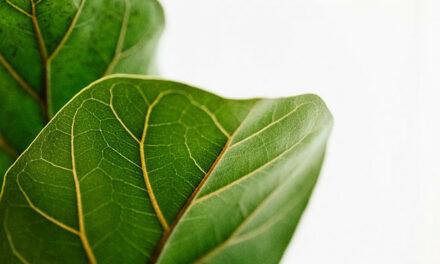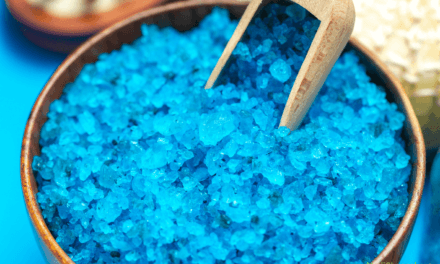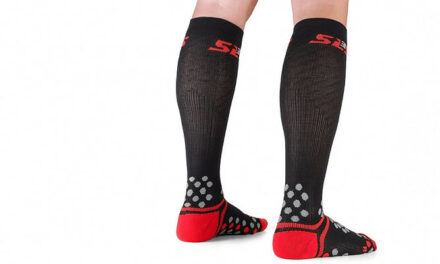Characterized by its soft, light and fluffy nature, cotton are the most widely used textile fabric in the world. It can be found in literally every closet and home. Giza cotton is a type of cotton that is even more light, fluffy and softer than anything. Now when it comes to diabetics, they desire and need every bit of comfort and fluffiness to help them manage their condition and prevent further damage, especially in their feet. Diabetic socks, for example, are a necessity for diabetics, although many do not know this. Will a diabetic sock made from Giza cotton, the softest fabric, have any effect on a diabetic? Is Giza Cotton Good for Diabetics?
Let’s take a look at what cotton and Giza cotton really is, and how it can affect a diabetic. But, let’s start it all by defining cotton.
What is Cotton?
Cotton is a soft and fluffy cellulosic seed fibre. The seed hairs from cotton plants, are called cotton fibres which are spun into yarns and woven into the fabric.
Cotton is both a fibre crop and food. It can be used to make various homewares, clothes and industrial product. Its seed can also be used as stock feed.
Cotton Fiber Products and Uses
- Its fibre strength and moisture absorbency make it the perfect fabric for producing homewares and clothes such as – hotel sheets, tarpaulins, astronauts’ inflight space suits, and army uniforms. Cotton fibres can be knitted into fabrics such as – chambray, velvet, jersey, corduroy, flannel and velour.
- Apart from textile products like socks, underwear, denim jeans, nappies and t-shirts, cotton is used in coffee filters, tents, fishnets, archival paper and book-binding.
- Cotton lint is also used to make goods such as – swabs, bandages, banknotes, x-rays and cotton buds.
- Blends of cotton and other natural fibres such as – wool and synthetic fibres like acrylic and polyester, can be used to produce various fabric types.
Cottonseed Products and Uses
Cotton seed weighs about half of the picked cotton. They can be fed to cattle as feed, and also crushed and used to make oil.
The cotton seed oil contains high levels of anti-oxidants (Vit-E), it is high in polyunsaturated fats, cholesterol-free and has a long shelf life.
- The cotton seed oil can be used in cooking, but that’s not all. It is used in products like margarine, soap, emulsifiers, pharmaceuticals, cosmetics, plastics and rubber.
- Cotton seed meal, a by-product of cotton seed oil extraction, is used as stock feed. It is a high protein meal and can be fed to most animals.
- Cotton seed hulls are also valuable and useful as a feed source for livestock.
Properties of Cotton Fibres
- Absorbs moist
- Breathable
- Comfortable to wear
- Can withstand heat, bleach and detergents
- Long-staple cotton such as Giza cotton, Supima, Pima, Sea Island and Egyptian cotton can be woven into silky smooth fabrics.
- Shrinks, unless treated
- Wrinkles easily
- Stronger when wet than dry
- Prolonged exposure to sunlight can cause damage to it
Growing Cotton
The cotton plant of the genus Gossypium, grows cotton flowers which bloom for only a day. Cotton flowers last for 5 to 7 days, its petals are usually pure white on the day of its full bloom, and turns bright pink the day after.
The carpel or boll (seedpod) begins to develop after the flower falls off. Around 7 – 8 seeds with cotton fibres attached to them, grow inside the boll which is about the size of a golf ball.
Harvesting Cotton
Once the cotton crop is ripened and ready for harvest, it is hand-picked by laborers or with harvesting machines.
- Pickers and Strippers are two harvesting machines used to efficiently remove the cotton without disturbing the plant. Another Picker, the Spindle harvester pulls the cotton from the boll, 1 or 2 rows at a time.
- Stripper harvesting
During Stripper harvesting, the machine moves along the rows of cotton plants and passes them between brushes or revolving rollers that pull off the cotton. It also pulls leaves and twig with the cotton.
- Cotton Gins
Separate the fibres from the seed. The cotton goes to the bale press after ginning, and they are packed into 480-pound bales. That’s about the size of a big refrigerator.
Cotton Quality
Cotton is classed or graded according to the established US Department of Agriculture’s standard based on cleanliness, length of the fibre, fibre strength and degree of whiteness.
Skilled cotton classers pull out a sample from the bales, and discard most of it until just a bit of well-aligned fibres remains. Then they measure the Staple fibres (the length of the fibres). Long staples ranging from 1.1 inches to 1.4 inches in length are higher grade cotton, and they are sold at higher prices.
Cotton Types
Before we discuss the different types of cotton fabric, let’s have a quick look at these 4 cotton plant species from which the various types of cotton fabric come from. There are other cotton species apart from these 4, but they are classified as wild shrubs and of no commercial value.
-
Gossypium hirsutum
This type of cotton is native to Central America, and accounts for 90% of cotton production worldwide. It is a short-staple cotton fibre, but grows well in almost every climate.
-
Gossypium barbadense
Native to South America, this cotton accounts for 8% of cotton produced worldwide. It is an extra-long-staple cotton fibre and far more expensive than Gossypium hirsutum. Other regions such as India, China and some foreign nations also cultivate this type of cotton.
-
Gossypium arboretum
Most cotton types grow on small bushes, but the Gossypium arboretum grows on large, almost tree-like bushes. It accounts for less than 2% of cotton produced in the world.
-
Gossypium herbaceum
Also called Levant cotton, contributes to less than 2% of cotton produced worldwide. This type of cotton is native to Africa and Arabia.
Cotton Fabric Types
-
Short staple (SS) cotton
Any type of cotton with fibres that are up to 1.125 inches long, is a short-staple cotton. It is not as soft as other types of cotton, but perfect for everyday use.
-
Long staple (LS) cotton
Cotton with fibres that are between 1.125 and 1.25 inches long, is a long staple cotton. It is softer and more luxurious than short-staple cotton.
-
Extra-long staple (ELS) cotton
This are the softest and most luxurious type of cotton in existence. Its fibres are longer than 1.25 inches.
-
Egyptian cotton
This refers to a certain breed of either long staple or extra-long staple cotton. An example are the Giza 45 cotton whose fibres are more than 1.417 inches long, and one of the longest and most luxurious cotton variety in existence.
-
Pima cotton
A partnership between the Pima Indians and the US government in the early 20th century created the Pima cotton, which is a type of extra-long staple cotton. It is considered the most durable type of cotton.
-
Supima cotton
This is a type of Pima cotton. With the approval of the American Supima Association (ASA), it can be grown only in the US with organic cultivation practises.
Giza Cotton
Egyptian cotton continues to prevail as the world’s best cotton for the past 3 centuries, and even now. Giza cotton is a type of Egyptian cotton, grown and harvested near the Nile river. The Nile Delta offers the perfect environmental conditions needed to stimulate cotton growth. The perfect amount of humidity and sunlight, with highly enriched soil, is all part of what creates this superior cotton.
This reputation is not without reason, because it really “is” the finest cotton there is, and here’s why.
- Unlike modern mechanized picking, Egyptian Giza cotton is hand-picked. This puts zero stress on the fibres, leaving them straight and intact, which goes further to guarantee the highest level of purity.
- The length of the cotton fibre is long enough to make the finest of yarns, without compromising the strength of the yarn.
- In terms of softness, it is like none other in the whole world. Amazingly, it gets softer with every wash.
- Its superior absorbency to liquid allows colours to remain bright, instead of washed out and faded. Fabrics made of Egyptian cotton, therefore, have brighter, deeper, and more resistant colours.
- The fabrics made from Giza cotton fibre are durable, more resistant to stress and more solid, due to the fibre’s strength.
Giza Varieties
-
Giza 45
This are the most famous variety of Giza cotton, and the oldest still grown in Egypt. Giza 45 represents the highest spinning potential and the highest quality due to its fineness. Its fibres are extremely long (1.417 inches), but because of its low crop yields, it is cultivated based on demand.
-
Giza 87
Light-weight yet strong, Giza 87 is a cross between Giza 45 and Giza 77, a truly exceptional variety. The Giza 87 cotton fibre is 1.378 inches long. With higher regularity, cleanliness and resistance, it is used to make extremely strong and fine yarns that have an extraordinary silky and soft consistency.
-
Giza 93
This is “the” actual finest cotton in the world. Egyptian Researchers of the Agricultural Ministry introduced this variety in 2013 as a cross between Giza 77 and PS6. Superior in fibre length (1.457 inches), strength, spinning properties, and softness, it surpasses the famous Giza 45.
Is Giza Cotton Good for Diabetics?
Giza cotton fabric is one of the highest quality fabrics you can find on the market. It is used to make a variety of luxurious textile products such as sheets, shirts, broadcloths, socks and so on. Pretty much anyone can wear Giza cotton, even diabetics.
- Giza cotton has very long fibres, is all-natural and chemical-free, which makes it extremely breathable. Its breath ability allows air circulation, which makes it a good option for diabetics.
- It has high moisture absorbency, and can soak up to 20% of its weight before it starts to feel damp.
- Giza cotton is super soft and great for sensitive skin and people with allergies. It is spun tightly into yarns, with a minimal amount of lint which means no skin irritation.
- It keeps you comfortable and cool, especially during summer.
Diabetic Socks
Quite a number of people that have to deal with diabetes do not consider diabetic socks a necessity. But they are an important part of better health and prevention of different complications. Diabetic socks are uniquely designed socks that aim to prevent blistering on skin surfaces, reduce pressure in the foot and lower leg, and minimize moisture accumulation.
Their jobs are basically to protect your feet while providing maximum comfort. In order to minimize neurological pain and discomfort, and friction to the nerves, they are mostly made to be seamless and non-elastic. These features help to prevent constriction and allow proper circulation.
As a part of diabetes management, the diabetic socks help to prevent foot injury which may lead to future amputation or even death.
Tip: Here are the best cotton-based blankets for fibromyalgia pain.
Cotton and Non-cotton Socks – Effects on Diabetics
In a survey on which socks are the best for diabetics conducted by the Diabetes Journal, some professionals recommend cotton or wool socks. Several others recommend acrylic socks or a synthetic blend. And some others advise to simply go for comfortable, and well-fitting socks, regardless of what fabric it is made of.
We’ll go into details on these views and see how they affect diabetics.
Cotton Socks
-
Comfortable
The most important thing diabetics need for their feet, is comfort. Cotton socks are soft fabrics that provide comfort and fitness.
-
Moist absorption
Many professionals recommend cotton because of its natural fibres and moisture-absorbent property. It keeps the feet dry and comfortable, especially for sweaty feet. But with this benefit also comes the challenge of moisture retention. Because it doesn’t have moisture-wicking abilities, the moisture it absorbs remain trapped, and the feet remain moist. The damp sock is an ideal environment for fungal growth. Professionals, therefore, advise that cotton socks should be changed regularly.
-
Breathable
Cotton socks allow the feet to be ventilated, and prevent sweating. This may not do so much for people with excessively sweaty feet, but it helps.
Tip: Here are the best cotton-based heated slippers for the elderly.
Non-cotton Socks
-
Wicking action
Non-cotton socks may not be as soft or as moisture absorbent as cotton socks, but they have their own special properties.
They are able to wick away moisture from the feet, to outside the socks where it can evaporate. Professionals recommend moisture-wicking socks for exercise, because the feet produce even more sweat than usual when exercising.
Cotton socks would absorb the moisture real good, but retain them, and the feet would remain moist. That might not be a good idea for a diabetic who’s trying to exercise.
And then there’s also a blend of cotton and non-cotton fabric socks. Some professionals argue that this might be the best out of the three. It comes with a combination of moisture absorption and moisture-wicking abilities, which is very convenient.
Which Socks Would Be The Best For a Diabetic?
Cotton socks would be best for “keeping your feet dry” and comfortable, because of its moisture absorption properties. But non-cotton socks or a blend between cotton and other materials would be best in draining moisture and discouraging fungal growth, especially during exercise.
Choosing socks really depends on how far your condition has progressed.
Early-stage diabetics without neuropathy issues or prior wounds or infection in their feet, can just wing it and go with whatever socks they find comfortable.
Diabetics whose conditions have progressed and develop insensitive feet, need unconstricting socks, comfortable and dry feet.
Giza Cotton Socks – Effects On Diabetics
The fact that diabetics need comfortable socks cannot be overemphasized. And what could be more comfortable than Giza cotton?
Although it is rarely used to make socks, its extra touch of softness, breath ability and comfort, makes it a great option for diabetics. Because Giza cotton comes with a bit of extra in everything, even its moisture absorbency and durability are higher than your regular cotton, which assures greater comfort and dry feet. Giza cotton socks are hypoallergenic and therefore safe for diabetics with delicate and insensitive feet.
But Giza cotton is still cotton, and that means, it retains whatever moisture it absorbs without the ability to wick it away. Its luxurious nature makes it a high-end fabric, and that makes it a little more expensive than your regular cotton.
Conclusion
The amount of time, effort and delicacy put into producing Giza cotton, makes it cost more than the conventional cotton. But it’s silky smooth, soft and premium quality is well worth the investment. Because of this, there have been scams arising and claiming to be Giza cotton. It is important as a consumer to be careful of companies with little or no reputation who sell this product.
As a diabetic, Giza cotton socks would provide maximum comfort and breath ability. But it is also important to consult your doctor for a recommendation on which sock would be best for you, based on your medical history and condition.






0 Comments